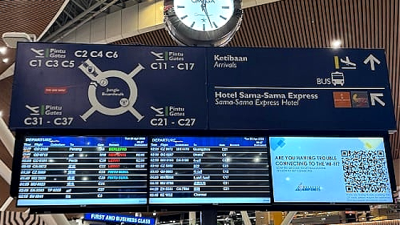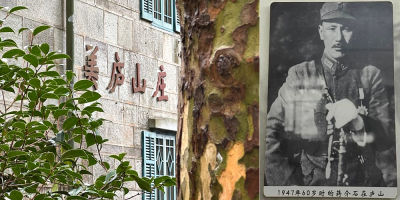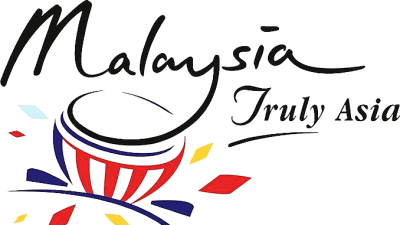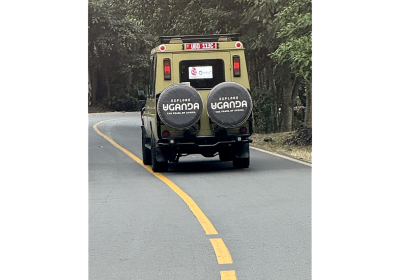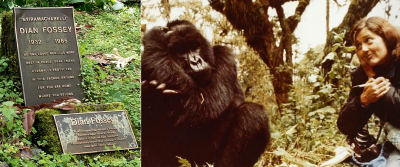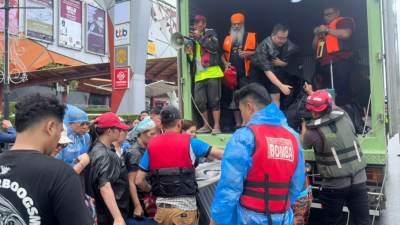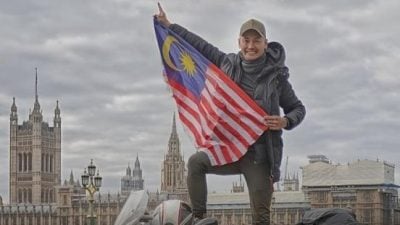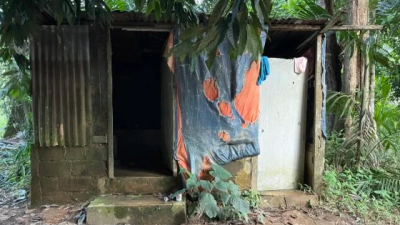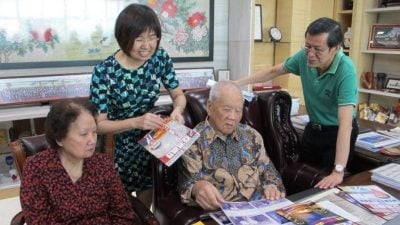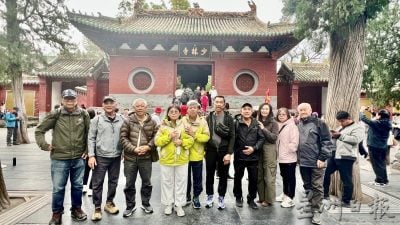In 1990, Malaysia was touted as one of ASEAN’s four Little Tigers. In 1991, the country impatiently brought on its “Wawasan 2020” proclamation for a developed nation.
We all should still remember the morale-lifting “Wawasan 2020” slogan back then, right?
We came out with a vision for a more diverse range of national cars, the record-breaking Petronas Twin Towers, and what kind of per capita income we should have by the year 2020…. We even had a vision to achieve a high-income society boasting a high education level, with everyone in the country having a roof over their heads.
Fast forward to 2023, of course we all know how far we have gone today, and how we are ranked among the ten member states of ASEAN!
It’s good to have a dream, as it will keep us motivated until the dream is eventually fulfilled. Looking back, have we really fulfilled our dream, or are we still dreaming the same dream over and again now?
Anyway, all we need is perhaps a mirror to look into!
After graduating from high school in my hometown back in those years, many of my classmates were making a beeline for Singapore to earn the lucrative Sing dollars.
Unlike my contemporaries, I admired the glitzy cityscape of our own capital city and the abundant opportunities it offered. So I gathered my courage, picked up my backpack, and headed north all alone.
More than 30 years have passed, and we are still not yet a developed country; neither is our capital city Kuala Lumpur a smart city or the Garden City we used to call ourselves!
As the capital of the supposedly most powerful among the ASEAN Little Tigers, KL spans over 240 square kilometres and is divided into six districts. The city now has a population in excess of two million, plus probably another one or two million of migrant workers.
Nevertheless, for so many years our federal territories ministers and mayors seem to have been busily handling matters related to land use and construction, like selling a recreational park to the developer for high-rise real estate development, or handing part of Ketumbar Hill, where city folks visit for exercise and hiking, over to a developer planning to build a few blocks of high-rise condominiums on a hill slope…
For a more balanced development, I wonder whether our mayor has ever walked into the community to learn more about the residents’ woes.
Fortunately, the federal government has put up some more rational infrastructure in KL, such as the LRT, MRT, multi-level road interchanges, toll highways and flood mitigation tunnels/roads, the Multimedia Super Corridor, KLIA… plus a klia2 that has since become a laughing stock among international travellers.
But all these are hardware infrastructure. Even after an office tower, a highway or a bridge has been completed and transferred, the residual industrial waste is often left idle by the roadside.
At the same time, our roads are becoming narrower, our green lungs removed, and even availability of parking lots is now a major issue.
Why not take a look at how Bangkok and Jakarta are handling their international airports? Besides, we mustn’t underestimate Vietnam’s overall physical development and its growth prospects, especially the efforts they have put in in the tourist industry.
Now look back at our own city: the KLIA people mover is totally paralysed now, and queues are fast piling up in front of the immigration counters on a daily basis.
Do you still think we should take pride in our airport? Sure enough that’s the responsibility of our federal minister and not the fault of federal territories minister or mayor!
But, other than selling land and approving construction projects, has our DBKL ever shown the slightest interest in tackling the many “software” problems? Otherwise, why can only downtown areas afford to have nice roads but not the outlying areas?
What about the countless potholes on our roads that instantly fill up after a downpour? Even if a stretch of the road is resurfaced, city workers will start digging it up in a few months’ time. What a shame!
What I really can’t understand is why a road that looks perfect gets resurfaced every few months for no good reasons at all while those badly potholed sections of the road conveniently escape their attention?

Worse still, KL is seemingly in a state of anarchy after the new government took over several months ago, so much so that even roads in our residential estates and back alleys of commercial streets are in very bad shape and are garbage-strewn.
Sure enough these litterbugs themselves seriously lack civic education, but what about the local businesses? Why can’t they organise a gotong-royong clean-up operation, not to mention hundreds of thousands of indifferent civil servants?
The situation is rapidly deteriorating, and this is definitely not the Garden City we once aspired to be. After an order had been issued by the sultan frustrated with the city’s deplorable state, the rubbish was cleaned up within 48 hours.
But what afterwards? Do we have to get the sultan to keep calling our mayors and ministers to remind them of their own obligations? Can’t these people just fix all the problems once and for all for the sake of the city folks?
The list can go on and on… It looks like the anarchic KL is getting from bad to worse. Take a look at our roads and highways: the problem of traffic bottlenecks has remained much the same without any improvement.
We can see that there are more and more high-rise towers and cars around us, but couldn’t the city authorities hire some urban experts to draw up a comprehensive road traffic strategy for our city?
Take for example, the traffic in front of Pavilion Kuala Lumpur is perpetually stalled because of the unsolved problem with traffic lights at the junction of Jalan Bukit Bintang and Jalan Sultan Ismail. Perhaps they can consider flexibly adjusting the intervals of traffic signals according to the traffic conditions.
Perhaps my proposal may not work, but at least DBKL can give it a try or come up with a more workable alternative solution!
Anyway, this area is the meeting place for tourists from across the globe, and we simply cannot afford to risk our international reputation just because of the nightmarish traffic here!
To be fair, we are not trying to find fault with the politicians, but this entails the most fundamental needs of the city folks. At least the elected representative of that particular area must take up the responsibility and the relevant government departments should do their jobs dutifully.
What I want to stress here is that perhaps you are just an ordinary white or blue-collar worker who has contributed towards the country’s development and has naturally something to expect from this country.
Just look at Ling, she has to come out of her house every morning at seven and walk 15 minutes to the nearest LRT station. Where this is concerned, she is really grateful for the city’s rapid transformation and progress over the years. Indeed, this has tremendously helped city folks who do not have their own transport.
The thing is, the moment you step out of the LRT station, you have to face yet another big problem: as it is raining hard today, how am I going to walk to the next station to catch another train for my final destination without getting wet? Everyone has to face this same dilemma that has been around for as long as we remember.
I wonder why our LRT or MRT cannot be designed like the ones in Bangkok or Hong Kong, where you have covered indoor or outdoor walkways linking adjacent buildings to walk along completely shielded from the monsoon rain or scorching sun.
With the watch ticking quietly inside her heart, Ling has no choice but to open the umbrella and tiptoe cautiously on the flooded sidewalk. Imagine if a motorcycle just happens to speed past and the dirty water splashes all over her nice office shirt. How embarrassing could that be?
And we mustn’t think a sunny day is definitely better than a rainy day. If you walk along the streets and alleys, feeling excited that you are about to reach Pavilion, you never expect to see colourful undergarments hung along bamboo poles just above you from the flats.
And on a rainy day, you might come across migrant workers examining every passerby from the window or door bare-chested, or simply drop a few pieces of garbage from above you…
Let me say it again, we absolutely have nothing against the migrant workers, but their habits and culture might have created some problems for our society. This is definitely not the “Garden City” our city has envisioned!
In short, I feel that the federal government has put too much emphasis on Putrajaya nowadays that KL seems to have been forgotten by them!
(Lee San is Founder and Group Executive Chairman of Apple Vacations. He has travelled to 132 countries, six continents, and enjoys sharing his travel stories and insights. He has also authored five books.)
ADVERTISEMENT
ADVERTISEMENT






